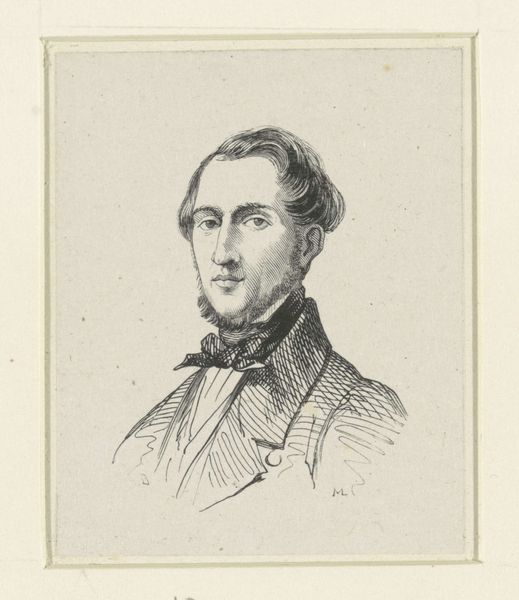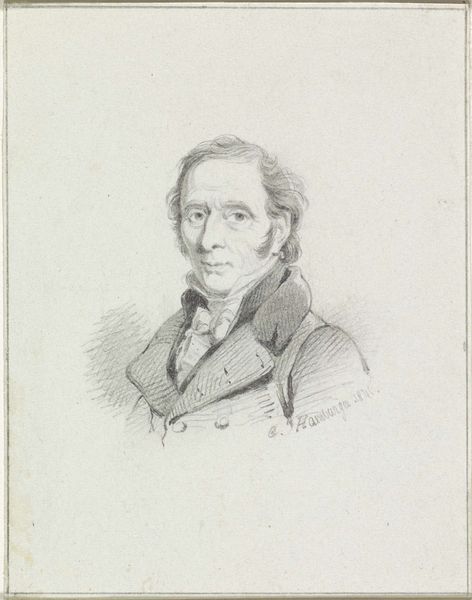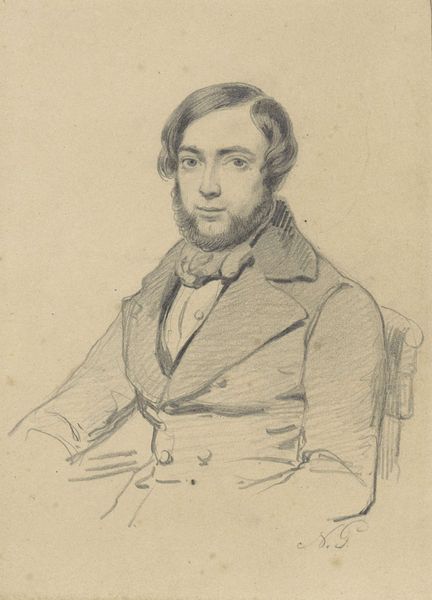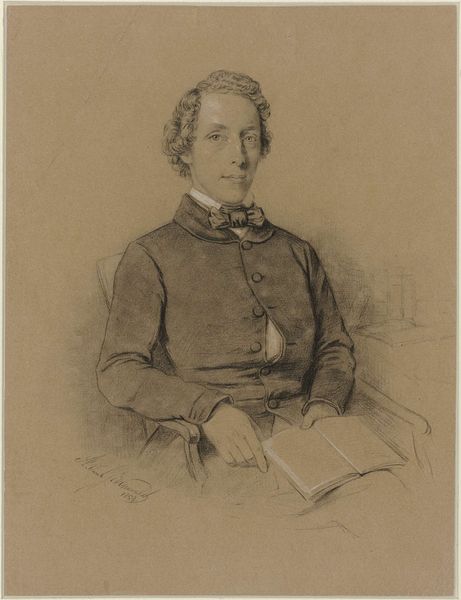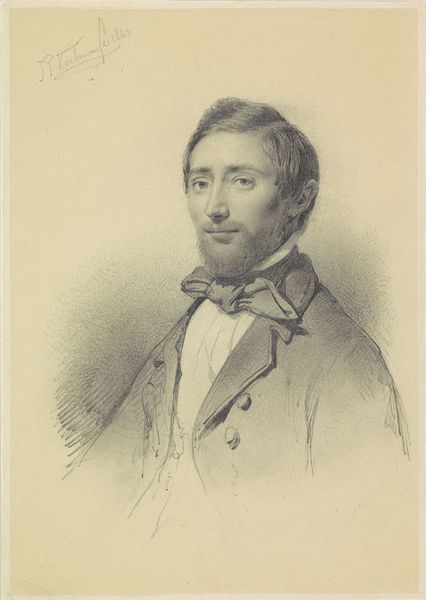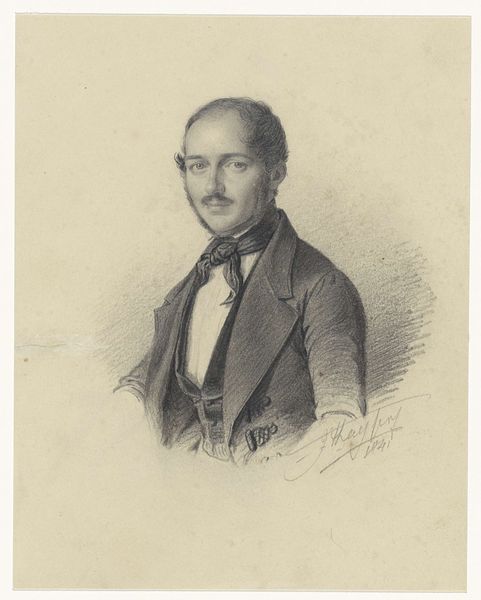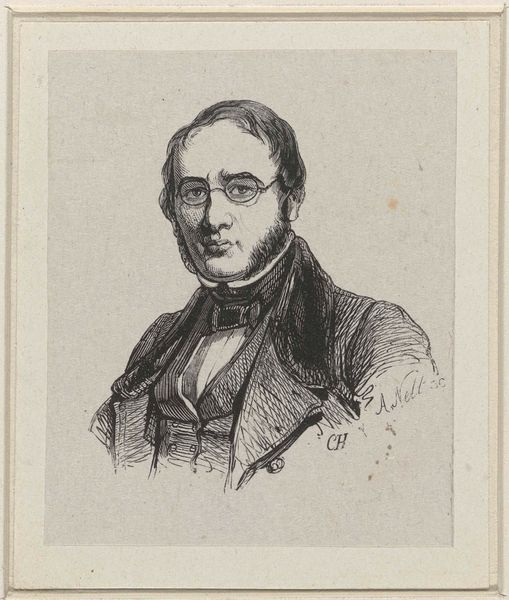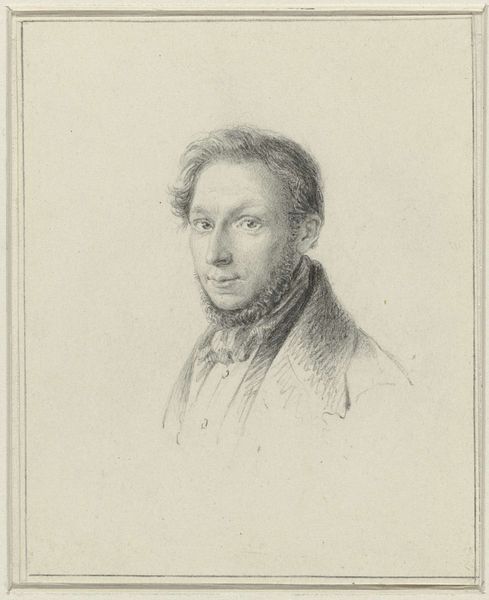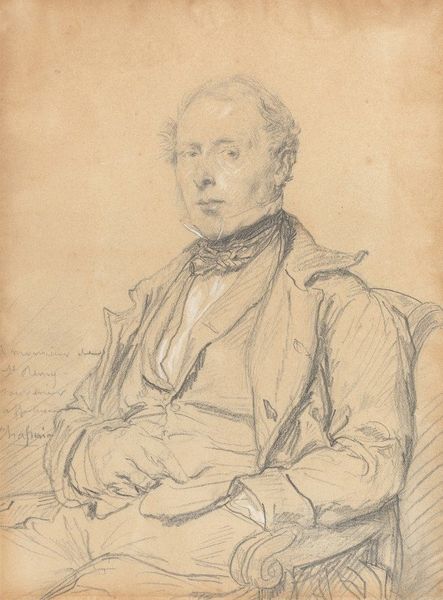
drawing, pencil
#
portrait
#
pencil drawn
#
drawing
#
amateur sketch
#
facial expression drawing
#
light pencil work
#
pencil sketch
#
portrait reference
#
pencil drawing
#
romanticism
#
pencil
#
limited contrast and shading
#
portrait drawing
#
pencil work
Dimensions: height 111 mm, width 86 mm
Copyright: Rijks Museum: Open Domain
Henricus Couwenberg made this portrait of Reinier Craeyvanger with graphite on paper, likely in the Netherlands during the 1830s or 40s. It's tempting to see this portrait as a simple likeness of an individual, yet portraits like this played a vital role in shaping social identity. Consider the sitter's carefully arranged hair and fashionable attire, which signal his social standing and adherence to contemporary ideals of masculinity. The Dutch middle class was in ascendance, creating and following new fashions and norms that distinguished themselves from both the aristocracy and the working classes. This type of portrait was commissioned as a display of status. To understand this work more fully, we can look into Dutch fashion trends, middle-class culture, and the network of artists and patrons that sustained portrait production. By examining these historical contexts, we gain insight into the social dynamics reflected in this seemingly straightforward image.
Comments
No comments
Be the first to comment and join the conversation on the ultimate creative platform.

